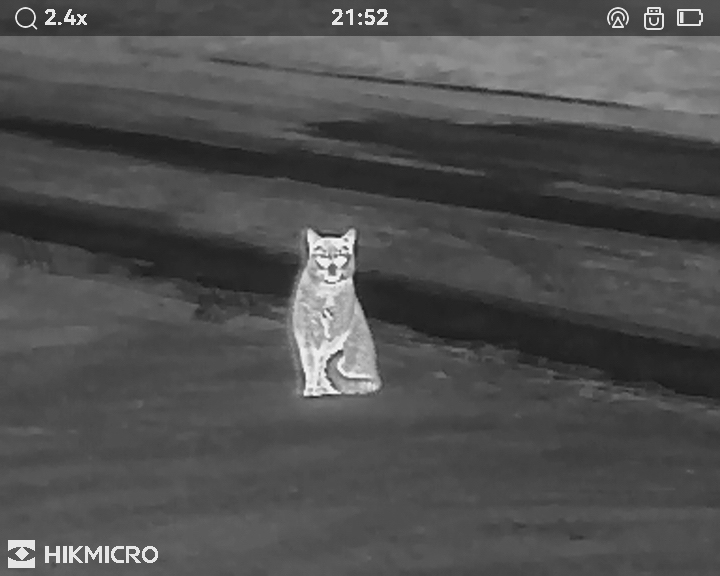People keep telling me how patient I must be when they see my photos of badgers, foxes, etc., but when I order a new piece of kit, I have no patience at all. I want to get my hands on it immediately, to start exploring its capabilities and limitations, and have difficulty thinking about anything else, so when the delivery of the new thermal camera was delayed for a couple of days by the state of the roads during the present cold spell, I was extremely frustrated. But whether patient or frustrated, time goes by at its own pace, and eventually, the thermal camera arrived.
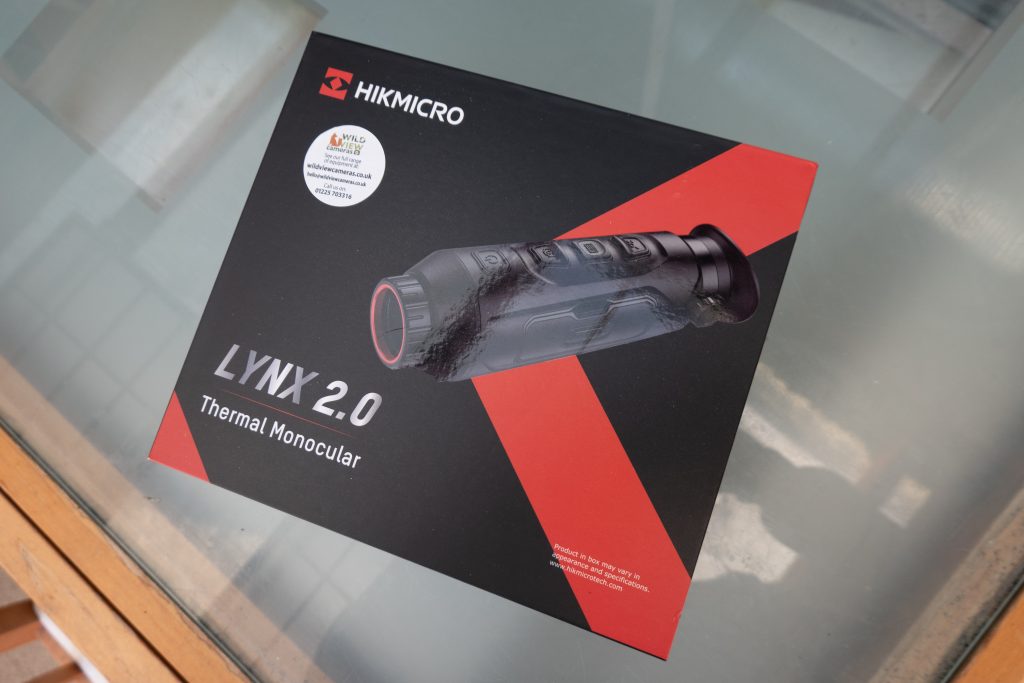
My movement has been limited recently by an injury picked up playing squash, but I went on a few short walks to check out what it could do, both in the dark and in daylight, and was impressed by its ability to pick up birds going to roost at dusk, and even a wren and a blackbird hunting on the ground in the dark.
Last night, the legs seemed to be good enough, so I decided that I needed to find out how good the thermal camera was at what I had bought it for. At about 8.30 pm, I put the thermal on a monopod, got wrapped up warm, and set off for the nearest badger sett.
It was very cold, and the ice crunched under my feet as I negotiated the path beside the road out of the village. Out of the glare of the road lighting, the thermal enabled me to see the birds roosting in the trees. After a while, I came to the lane leading to the badger sett and the neighbouring farm came into view.
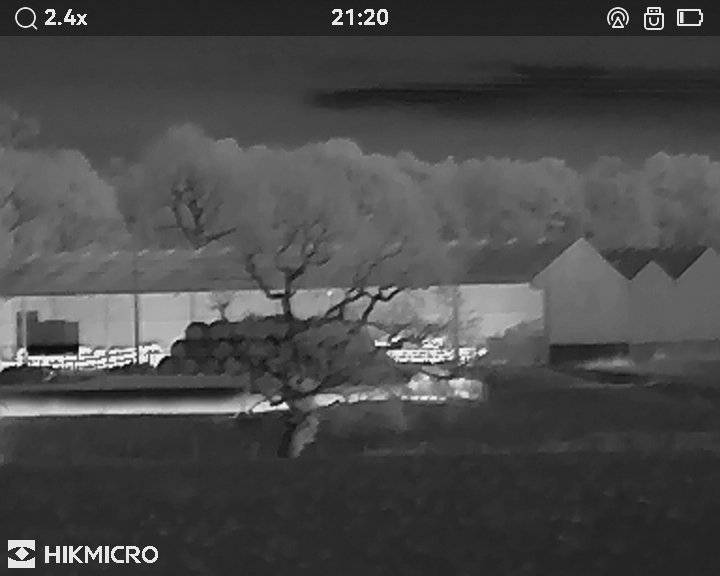
The warmth inside the barns was very visible, and I wondered about the cost of allowing this heat to escape.
The sett was located in a narrow wood which followed a small stream, and I entered the field bordering the wood through a gap in the hedge. Scanning around the field with the thermal, I could see several birds roosting in the trees, but what caught my attention immediately were two heat sources in the field, just outside the wood where the badger sett was.
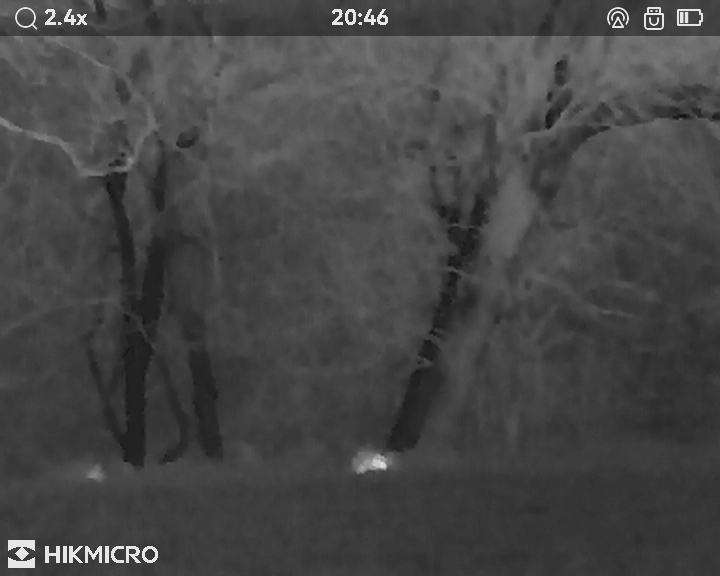
I watched them for a while, but could see no sign of movement, so I started walking across the field towards them, stopping to check them now and then. After a while, it was obvious that the glows were not live animals, but I still had no clue what caused them.
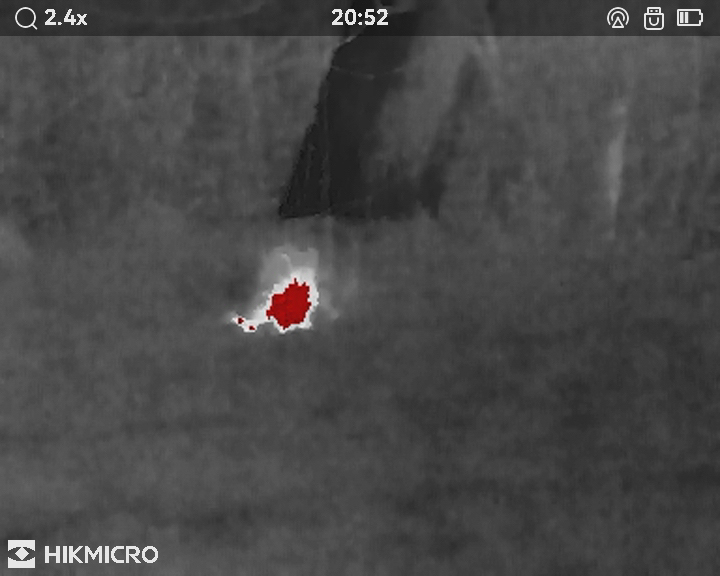
Suddenly, realisation dawned! The badger sett entrances are dug in the near bank of the stream, and I remembered that part of the tunnels under the field had collapsed, providing openings to the complex of tunnels, which badgers did not use as they were out in the open field.
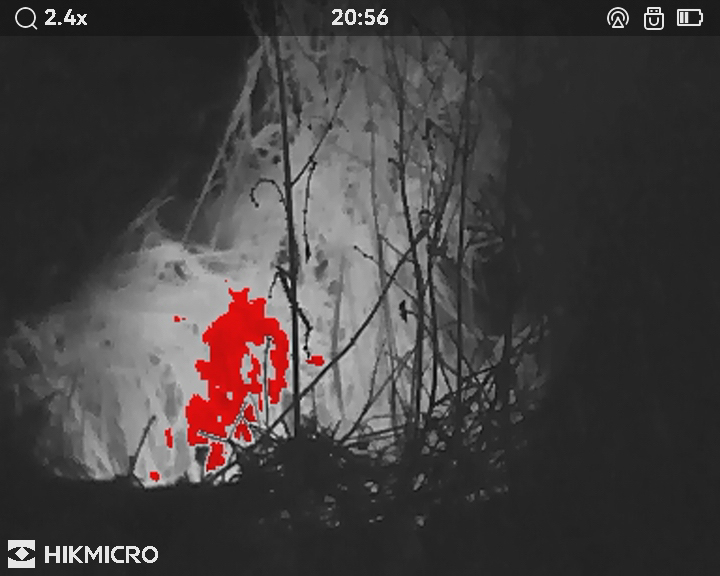
So, a couple of metres away from one of the openings, I could see the warmth of animals, badgers but maybe fox, lying up in a nest chamber underground, escaping into the freezing air.
I realised that I now had a powerful new tool for surveying badger setts and fox earths for occupancy – an excuse for lots more wandering in the dark woods! More immediately, my legs were becoming more painful, but I had to ckeck the owl nestbox attached to one of the large trees in the wood – no heat glow there.
Taking one last scan around the edges of the field revealed some roosting birds.
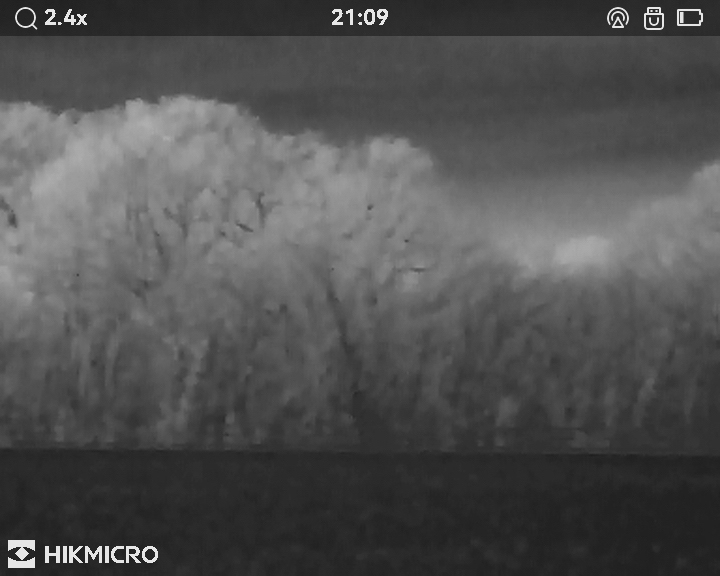
I made my way across the field towards the roosting birds which were more evident through the thermal than in the above picture – they are there! Look closely and you will see them.
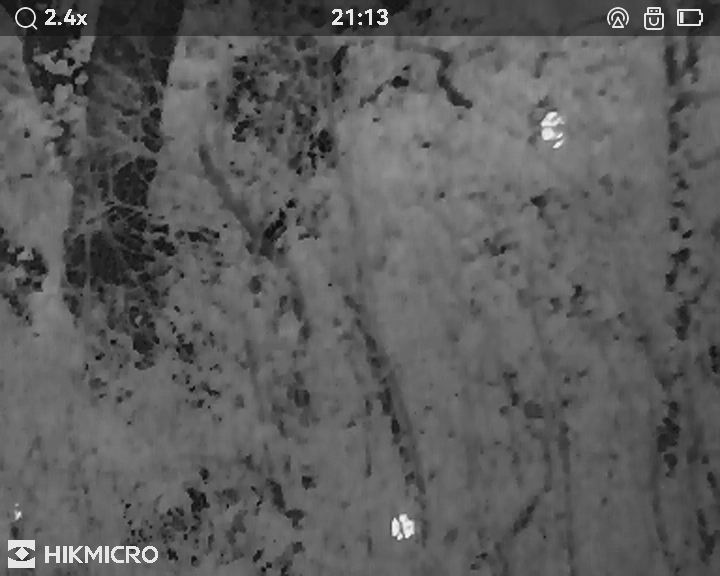
The birds (probably pigeons) sat tight as I approached to within 20 m. of the woodland edge, but couldn’t be identified because of the intervening branches and twigs, as you can see.
I hobbled off across the field towards home. Going along the lane, I watched a bird (just a glow) hunting for food along the hedge. I could tell, from the way it moved, that it was a blackbird, and wondered why it was still hunting for food over five hours after sunset. It probably reflects the difficulty of finding enough food to survive the winter in the weather conditions we have experienced over the last few weeks.
Arriving at home, I was greeted by Rhiannon’s cat.
